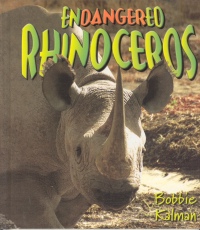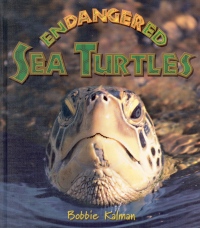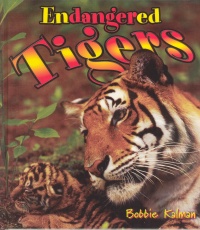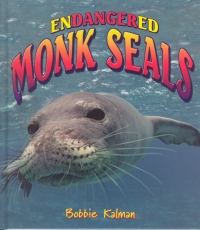| ________________
CM . . .
. Volume XI Number 6 . . . .November 12, 2004
excerpt:
This new series, "Earth's Endangered Animals," matches the traditional quality and reader accessibility of previous science series by Crabtree. With four titles so far, this series gives young readers up-to-date information on common and not so familiar species of animals in an appealing presentation rich with colour photos and lifelike drawings. Each 32 page book opens with an introduction to the concept of endangerment with definitions of the various threat levels provided by the World Conservation Union's Red List. A brief description of the topic species is followed by details of the types remaining in the wild: eg. five types of tigers, only two types of monk seals. More detailed characteristics of the animal are given, including special adaptations for optimum survival. These descriptions focus on the animal's basic needs in terms of food, space and habitat, as well as life cycle to lay the groundwork for further explanation of the reasons it has earned the endangered status. In all cases, fewer young are being born due to lack of adequate space, reduced availability of food, and reduced longevity partly as a result of the previous factors. More specific causes for the population decline are dealt with: human interference, habitat destruction, pollution, overhunting. A final chapter is devoted to 'How You Can Help.' Attempts to safeguard the species in preserves and zoos are explained as well as the laws created for their protection in the wild. The young reader is encouraged to learn more and build respect for wildlife. Websites are provided, along with activities such as fundraising to contribute to habitat preservation programs, or for 'adoption.' A Glossary defines some boldfaced terms while others are well explained in context. A brief index is included. The text is presented in large, easy to read type in small portions well laid out among clear, action-filled photos or drawings that support it. Many illustrations have additional captions. The monk seal photo referred to in the excerpt above is a close-up that leaves no doubt as to the origin of the animal's name. Some highlights of the various books include: - an excellent explanation of the three groups of pinnipeds (seals, sea lions and walruses) and how to distinguish them This series offers young researchers a fine starting point and inspiration to seek out further resources on these endangered animals. Highly Recommended. Gillian Richardson is a former teacher-librarian, freelance writer and writing instructor living in BC.
To comment
on this title or this review, send mail to cm@umanitoba.ca.
Copyright © the Manitoba Library Association. Reproduction for personal
use is permitted only if this copyright notice is maintained. Any
other reproduction is prohibited without permission.
NEXT REVIEW |
TABLE OF CONTENTS FOR THIS ISSUE
- November 4, 2004.
AUTHORS |
TITLES |
MEDIA REVIEWS |
PROFILES |
BACK ISSUES |
SEARCH |
CMARCHIVE |
HOME |



